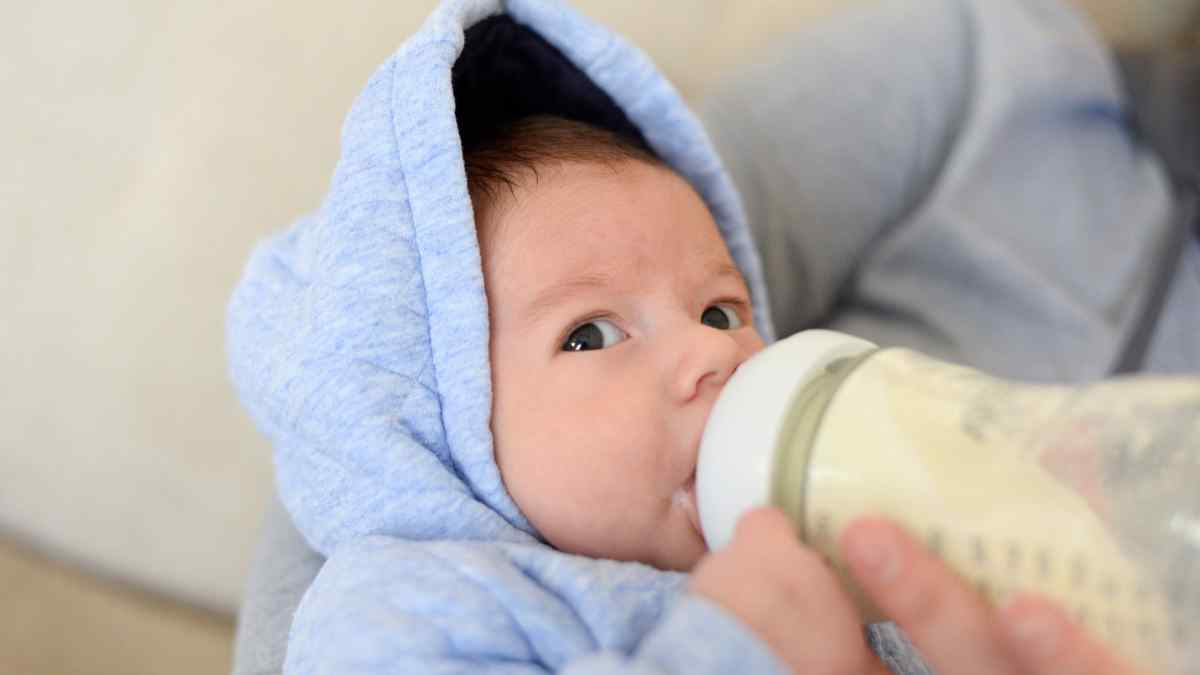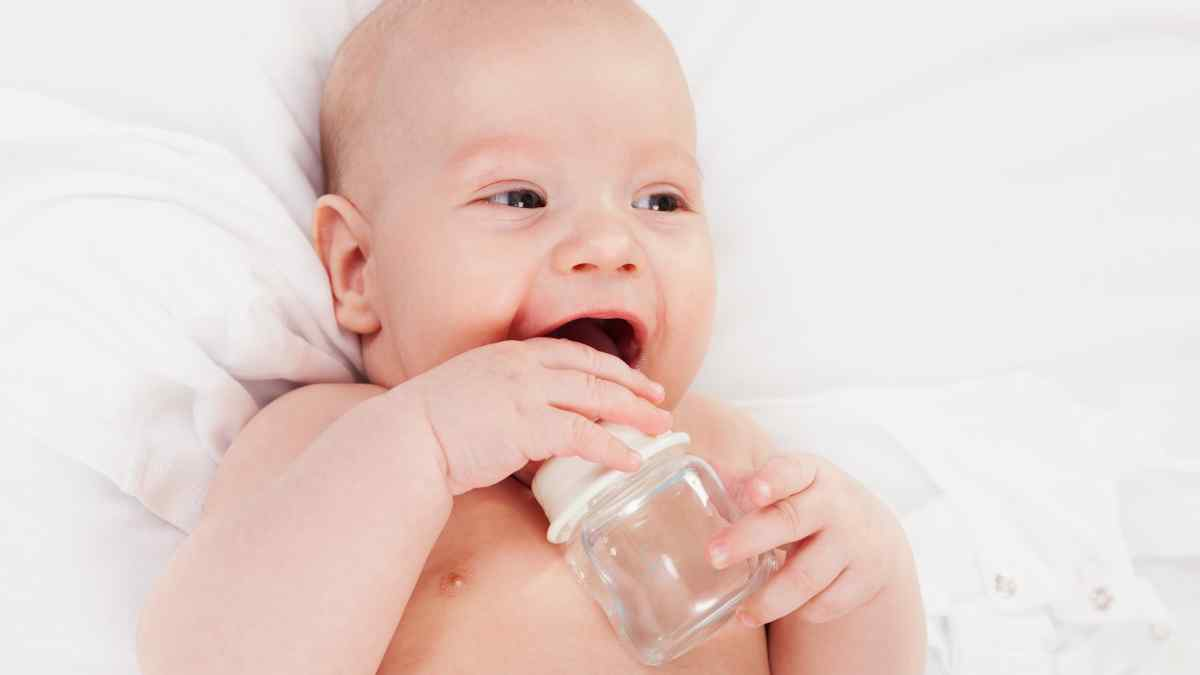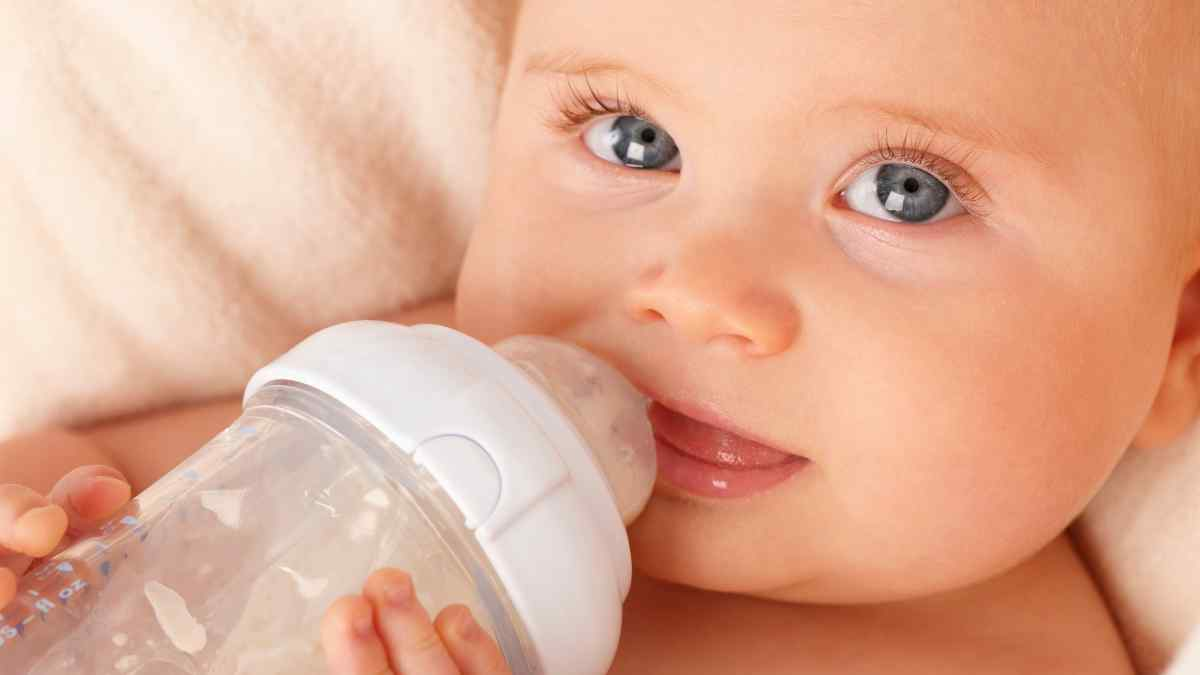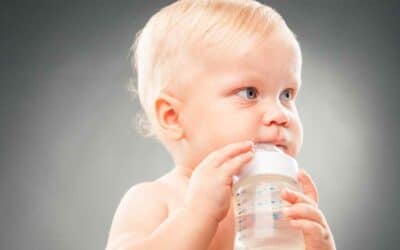As parents, we vigilantly guard the well-being of our children, making sure that the food they eat and the water they drink contribute to their health and development. Water, the most fundamental of necessities, is often at the center of a silent debate that bubbles beneath the surface of our daily routines: should we be giving our children purified water, or is tap water perfectly safe?
In this content, we dive into this fluid discourse to explore the nuances of water quality and its impact on our children’s health. From understanding the potential contaminants that lurk unseen to unraveling the myths that surround our water sources, this guide is designed to equip you with the knowledge to make an informed decision. Whether you’re considering the switch to purified water or wondering if your tap water makes the grade, this article will lay out the facts, dispel the fiction, and help you steer the health of your family with confidence.

Understanding Water Quality
Water is the essence of life, the most vital nutrient for our health and survival. As parents, we are often caught in the crosscurrents of the debate between purified vs tap baby water, especially when it comes to what’s best for our babies. This column will serve to clarify what constitutes water quality, the potential contaminants that may lurk within, and the standards set by regulatory bodies to ensure safety.
The Essence of Water Quality
Water quality is determined by its physical, chemical, biological, and radiological characteristics. Drinking water, whether from municipal tap water supplies or bottled sources, must be clear of harmful chemicals and contaminants to be considered safe for consumption. It should ideally contain beneficial minerals that contribute to the overall health of individuals. For babies, in particular, who may get their hydration from breast milk or formula, the quality of water used can have a direct impact on their developing bodies and immune systems.
Contaminants in the Current: Health Effects and Concerns
Common contaminants in drinking water include chemical pollutants such as pesticides, herbicides, and industrial chemicals. Other contaminants can stem from natural sources like arsenic from the soil. Then there are by-products of water treatment processes like chlorination, which can introduce harmful substances into the water supply. Drinking tap water that hasn’t been adequately filtered can expose individuals to these substances, which may lead to health concerns ranging from weakened immune systems to kidney disease.
In babies, too much fluoride, for instance, from fluoridated tap water, can lead to conditions such as dental fluorosis. Although fluoride exposure is crucial for preventing tooth decay, excessive amounts can have the opposite effect on dental health. It’s a delicate balance to maintain, especially when considering the essential minerals that should be preserved for their health benefits.
Regulatory Standards: The Guardians of Drinking Water
The Environmental Protection Agency (EPA) sets federal drinking water standards in the United States, establishing the maximum contaminant level allowed in public water supplies. This is where annual consumer confidence reports play a critical role, providing transparency on the tap water quality supplied by water utilities. Purified bottled water, while regulated by the Food and Drug Administration (FDA), often falls under scrutiny due to concerns about plastic bottles and the environmental impact of bottled water companies.
Municipal water treatment plants are required to follow stringent water treatment methods to remove certain contaminants and ensure the provision of safe drinking water. Treatment processes vary, including the use of chlorine, boiling water, and complex purification techniques like reverse osmosis and demineralization in water purification plants.

Purified vs Tap Water: A Parental Perspective
For parents deciding whether to drink tap water or opt for bottled and tap water alternatives, understanding these factors is crucial. Purified water goes through a water purification process that often involves reverse osmosis or distillation, effectively removing harmful chemicals but also stripping away beneficial minerals. Filtered tap water, on the other hand, might retain these minerals while reducing the presence of contaminants.
The choice between drinking distilled water, using boiled tap water, or investing in home water purification methods, such as carbon filters or UV light treatment, is often influenced by the local water supply’s quality. With the World Health Organization and public health agencies emphasizing the importance of access to clean water, it’s clear that both the developed and developing countries face challenges in ensuring water safety.
The Verdict on Minerals and Fluoride
Mineral water and spring water often boast of their rich content of essential minerals, yet they come at an environmental cost. On the flip side, filtered water can offer a balance, removing harmful chemicals while retaining beneficial minerals. And while additional fluoride in the form of fluoridated water can be a public health boon in preventing dental cavities, the debate over fluoride levels continues, with some arguing that there’s no significant difference in tooth decay rates between communities that have fluoridated tap water and those that do not.
What is Tap Water?
Tap water is the cornerstone of daily hydration for billions globally, a resource that flows readily from our faucets, thanks to the intricate web of municipal water systems. But what exactly is tap water, and how is it sourced? The journey of tap water begins as surface water or groundwater which is then channeled through an extensive water treatment process to meet the standards of safe drinking water.
Municipal Marvels: The Journey of Water Treatment
Once sourced,tap water undergoes rigorous treatment methods at municipal water treatment plants. The goal is to deliver water that’s not just safe to drink but palatable. Common stages of this treatment include coagulation and flocculation, sedimentation, filtration, and disinfection. Processes like reverse osmosis and advanced filtration can also be part of the treatment to ensure that contaminants are removed effectively. These treatment processes aim to eradicate harmful bacteria and viruses, filter out sediments, and remove chemical pollutants and other contaminants that may pose potential health risks.
The Challenging Current: Concerns with Tap Water
Despite the sophistication of water treatment plants, concerns linger over the quality of tap water. Chlorine, widely used for disinfection, can react with natural organic matter to form disinfection by-products, some of which may have adverse health effects. Fluoride, added to prevent tooth decay, is another contentious additive; while it has dental health benefits, excessive fluoride levels can cause dental fluorosis, particularly in children. The possibility of lead contamination from corroded pipes is a significant public health concern, given lead’s potential to cause developmental issues in children and kidney disease in adults.
The confluence of these concerns steers some towards bottled water or home purification systems. Bottled waters, though convenient, contribute to plastic pollution and can be less regulated than tap water. Meanwhile, home purification techniques such as boiling water, using carbon filters, or even bottled water brands offering purified bottled water have gained popularity for those seeking control over their water intake.

The Transition from Purified to Tap
As we continue from the conversation on the merits of purified vs tap water for babies, it becomes evident that tap water represents a practical and generally safe option for drinking water, especially in developing countries where water supplies are closely monitored and regulated. The environmental protection agency, alongside water utilities, ensures through annual consumer confidence reports that the public is kept informed about the water quality delivered to their homes.
However, for those with heightened health concerns, especially regarding children who may be more vulnerable to contaminants or too much fluoride, filtered tap water can offer a middle ground. By maintaining the mineral content essential for overall health while mitigating potential health risks, filtered tap water provides a compromise between the stringent purity of purified water and the practicality of tap water.
As we consider our options, it is crucial to recognize that whether we drink directly from the tap, filter our water, or opt for bottled varieties, the collective goal remains clear: to ensure that every sip contributes positively to our health and well-being.
What is Purified Water?
In the midst of discerning whether to offer purified or tap water for babies, it becomes imperative to define what purified water is and understand its distinction from the tap water flowing through our household faucets. Purified water is essentially water that has been mechanically filtered or processed to remove impurities and make it suitable for drinking. Unlike tap water, which is treated to be potable, purified water undergoes additional processes to ensure a higher purity level, effectively making it free from bacteria, fungi, algae, viruses, and chemical pollutants.
The Purification Process: A Dive into Clarity
The journey to purity begins with water from various potential sources, including groundwater, tap, or directly from a spring. This water is then subjected to a series of rigorous purification methods to strip away contaminants and dissolved solids. Distillation is one such method, where water is boiled, and the steam is collected, leaving behind most types of impurities. Deionization takes this a step further by using ion-exchange resins that remove mineral salts from the water. Perhaps the most lauded method is reverse osmosis, where water is forced through a semipermeable membrane, which acts as a selective barrier, filtering out a wide spectrum of contaminants, from particles to molecules and ions.
Each purification method has its own merits, but they share a common goal: to deliver water in its most unadulterated form. Distilled water, for instance, is so pure that it is often used in medical laboratories where the presence of impurities could compromise scientific results. Reverse osmosis water, on the other hand, is favored in the culinary industry for its ability to provide a clean canvas that doesn’t alter the taste of food and beverages.
Benefits of Purified Water for Children’s Health
The discourse on whether to drink tap water or to choose purified alternatives becomes particularly pointed when considering children’s health. Purified water holds several benefits for the young ones, primarily because it is devoid of the contaminants that may still be present in tap water despite treatment. Drinking purified water can be a safeguard against potential toxins and bacteria that their developing immune systems are ill-equipped to handle.
Moreover, when we consider the sensitive nature of children’s developmental stages, purified water can be seen as a protective measure against potential issues like dental fluorosis, which can occur from excessive fluoride intake from fluoridated water. While fluoridated tap water aims to bolster dental health, the exacting purity of distilled or demineralized water ensures that parents can regulate fluoride exposure by other means, such as dental care products designed specifically for children.
Further, in the context of bottled water companies and the water supply they draw from, purified bottled waters offer an assurance of consistency that might not always be guaranteed in tap water due to the variability of water supply sources and treatment efficacy. However, it is also critical to balance these health benefits with environmental considerations, as the use of plastic bottles contributes to ecological strain.

Making the Right Choice for Your Family
As parents, we are the guardians of our family’s well-being, and the choices we make, especially when it comes to essential elements like water, can have a profound impact on our loved ones. In our previous column, we delved into the intricacies of choosing between purified and tap water for your children. In this article, we take the discussion further and explore how to ensure that you’re making the right choice for your family’s hydration needs.
Testing the Waters: How to Test Tap Water at Home
Before deciding on the best water source for your family, it’s essential to understand the quality of your tap water. Home water testing kits are readily available and provide an easy way to check the water for various parameters. Common tests include assessing water hardness, pH levels, and the presence of specific contaminants such as lead, chlorine, and heavy metals.
One crucial aspect to consider is lead contamination. This is particularly vital if you live in an older home with lead plumbing. Lead exposure can have severe health consequences, especially for children. By testing your tap water for lead, you can take appropriate measures to address any issues, such as using water filters or replacing lead pipes.
Factors to Consider: Making the Decision
When determining whether to choose purified or tap water, several factors should influence your decision. One of the most significant considerations is your family’s health history. Understanding if there are specific health concerns or vulnerabilities within your family can guide you in making a more informed choice. For example, if someone in your family has a weakened immune system or is sensitive to certain contaminants, opting for purified water might be the safer route.
Local water quality is another pivotal factor. The quality of tap water can vary significantly from one location to another. Contacting your local water utility or accessing their annual consumer confidence reports can provide insights into the tap water quality supplied to your area. It’s crucial to be informed about the contaminants present in your tap water and the measures taken to address them. If you have concerns about specific contaminants or the taste and odor of your tap water, you can consider using water filtration systems to enhance the quality.
Improving Tap Water Quality at Home
If your home water test or local water quality reports indicate that your tap water may not meet your family’s needs, there are steps you can take to enhance its quality. Installing water filters that target specific contaminants, such as activated carbon filters or reverse osmosis systems, can significantly improve the purity and taste of your tap water. These filters effectively remove common contaminants like chlorine, sediments, and heavy metals.
Furthermore, if you’re concerned about the presence of fluoride, you can explore water filters equipped with special fluoride-removing cartridges to maintain the right balance. To address water hardness or mineral content, you can use water softeners or conditioners. These systems help reduce the presence of minerals like calcium and magnesium in your tap water, which can affect its taste and performance in appliances.

Conclusion
In conclusion, as parents, the choices we make regarding the water our children consume are pivotal to their health and well-being. Water is the essence of life, and understanding the nuances of water quality based in this baby water guide is essential in making informed decisions. In our exploration of purified vs tap water, we have unraveled the complexities surrounding water quality, the potential contaminants, and the regulatory standards that ensure safety.
Water quality is determined by physical, chemical, biological, and radiological characteristics, and it plays a crucial role in the health of our families. Common contaminants, ranging from chemical pollutants to by-products of treatment processes, can have significant health effects, particularly for our children. Striking the right balance, especially with minerals and fluoride, is a challenge that parents face in their quest to provide the best hydration.
Ultimately, the goal is clear – to ensure that every sip of water contributes positively to the health and well-being of our families. The choices we make, whether it’s purified or tap water, are a testament to our commitment as guardians of our loved ones’ health. By understanding water quality and considering the specific needs of our families, we can make the right choice for our family’s hydration needs, steering their health with confidence.
Did you find this article helpful? Please let us know by commenting below. If you have any questions, feel free to ask.



